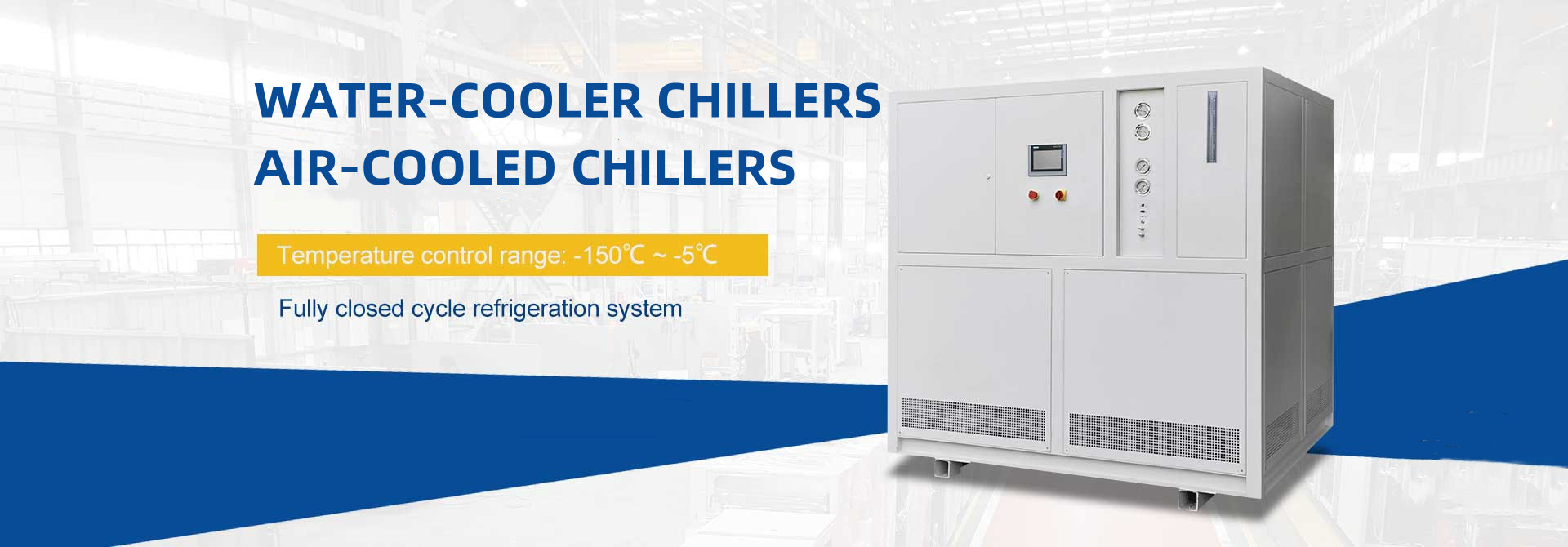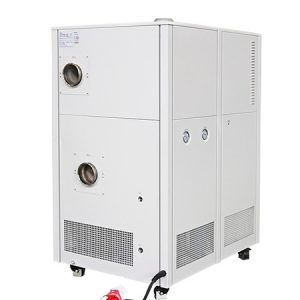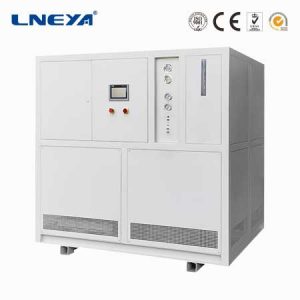Malentendus dans l'utilisation du système de contrôle de la température de la pompe à vide
When using the vacuum pump temperature control system, only the correct operation method can ensure the normal and stable operation of the equipment. If there are many wrong operation behaviors, it will directly affect the normal use of the equipment, and even affect the cooling performance.

1. When starting up, adjust the pressure drop of the inlet and outlet water higher than the operating parameters. When the pressure drop is too high, open the inlet and outlet valves of the evaporator of another non-operation unit. Reduce pressure drop by draining excess water from another unit evaporator. This mode of operation is artificially increasing the running current of the cold water pump, wasting power resources.
2. When starting up, the inlet and outlet valves on the evaporator of the chiller that are not turned on are not closed first, which causes a part of the cold water to flow away from the evaporator of the chiller that is not turned on, which affects the cooling effect of the chiller in the working state.
3. In the process of operation, it is necessary to carefully study the specific steps of opening and closing the equipment, and use the correct operation method to start the heating and cooling temperature control system according to the actual use environment, so as to avoid equipment failure.
4. Every time you need to use it, you need to follow the steps in the instruction manual. If there is a different operation method than the requirement, it needs to be corrected in time, so as not to affect the normal operation of the equipment, and it is not conducive to the long-term use of the vacuum pump temperature control system by the enterprise.
Therefore, when using it, you need to learn the correct operation method. If the enterprise can complete the entire operation process of the vacuum pump temperature control system according to the operating instructions, even without any maintenance and maintenance, the service life of the equipment can also be guaranteed. Then the more failures occur, the higher the cost of use, which is not conducive to the long-term completion of production tasks for enterprises.
In terms of industrial process temperature control, no matter which temperature control system/equipment you use, they are actually chillers. The difference is that water is used as the cooling cycle or oil is used as the medium. temperature unit. Need help find our LNEYA temperature control solution department at sales@lneya.com.
Recommandations connexes
-
How to clean air control system?
1351In order to respond to the requirements of the two types of society in the country, environmental protection and conservation have become increasingly important. Therefore, in order to extend the life of the product, it is still necessary to have ...
Voir les détails -
Le refroidisseur d'eau à très basse température 60P consomme trop d'énergie et nécessite une attention particulière
91160p ultra-low temperature water chillers of different manufacturers have different performance configurations and different energy consumption. If you find that the energy consumption is too large, you must check in time to see if there is a probl...
Voir les détails -
Contact étroit entre les véhicules à énergie nouvelle et les unités de contrôle de la température d'essai des batteries LNEYA
1502Compte tenu de la situation actuelle en matière d'énergie et de l'essor de l'industrie automobile, les véhicules à énergie nouvelle arrivent à point nommé, au même titre que l'industrie automobile moderne. La batterie du véhicule à énergie nouvelle joue un rôle décisif dans la pe...
Voir les détails -
Plage de contrôle de la température et précision du testeur de température haute et basse
1053La précision de contrôle de la température de l'huile caloporteuse du testeur à haute et basse température utilisé pour tester les composants est de plus ou moins 0,5 ℃, ce qui résout le problème du décalage de contrôle de la température dans les composants électroniques. Principaux avantages...
Voir les détails
 LNEYA Industrial Chillers Fabricant Fournisseur
LNEYA Industrial Chillers Fabricant Fournisseur













